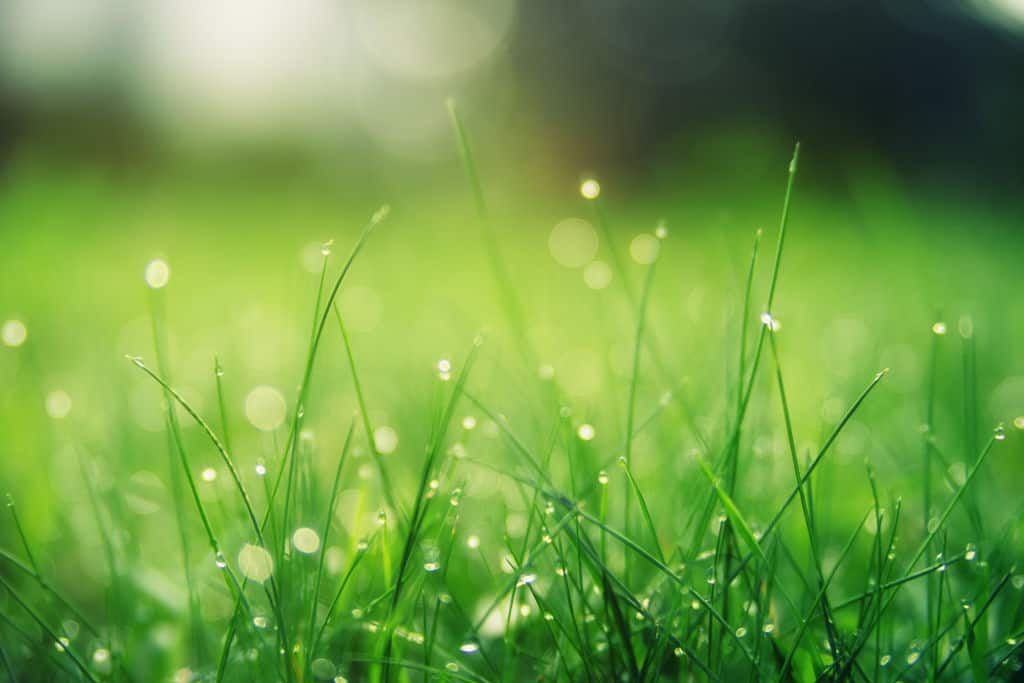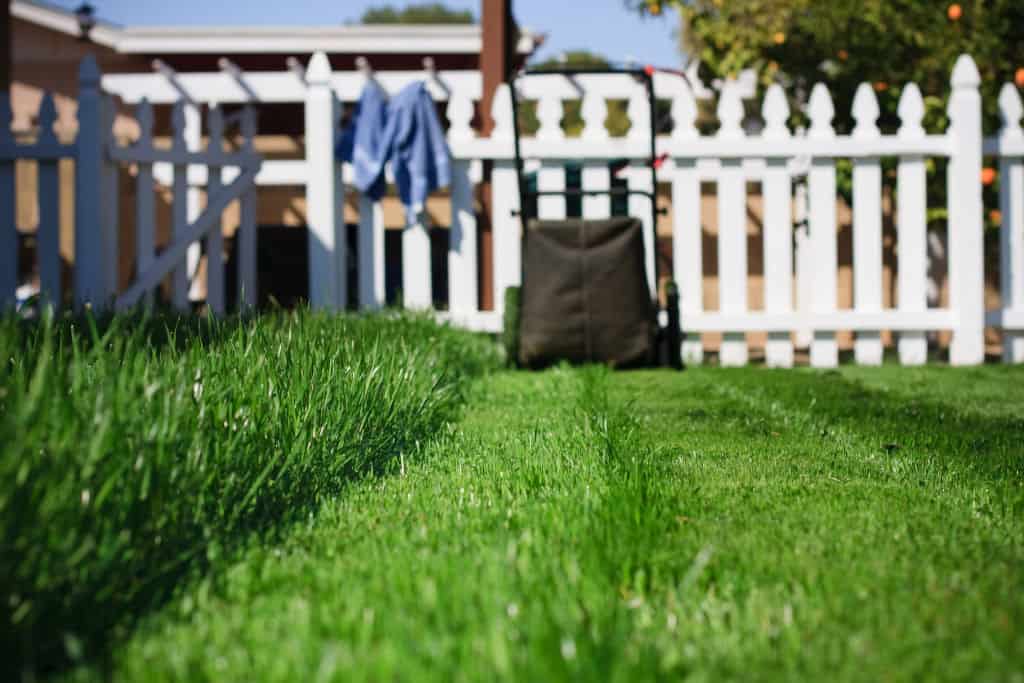Everyone has probably told you that mowing wet grass is a bad idea. But, what if it was just light rain – will you ruin your lawn or your mower? And how long do you have to wait?

How Soon After Rain Can You Mow?
Once the pavement starts drying, it’s a sign you can mow your lawn. The wetness of grass post-rain can often be likened to morning dew.
But there are nuances to consider. If it was a brief shower during an otherwise sunny day, then waiting a mere few hours is sufficient. On the other hand, if you experienced a full day or two of downpour, it might be prudent to wait a couple of days.
Mowing during a light rain won’t necessarily damage your lawn, nor the majority of mowers. However, always monitor how your mower performs under such conditions and prioritize cleaning it afterward.
How Long Does It Take for Grass to Dry After Rain?
Combine the moisture levels with the time of day and season, and you’ll know when to mow. For instance:
- After Morning Showers. If the rain stops early, your lawn will likely be dry by afternoon. Think of it like the rapid melting of ice in a summer beverage.
- After Continuous Rain. After several rainy days, give your lawn a breather. Wet grass can lead to mower damage and uneven cuts.
- After Spring Showers. Spring soil retains more water, so a bit more patience post-rain is warranted. The risk? Potentially damaging the moist soil and ending up with an uneven grass cut.
- Heavy Rain and Winter. When grass bends due to moisture, mowing will result in an uneven cut. Wait until the grass regains its posture.
- A Simple Test. If the grass compresses underfoot and doesn’t spring back, hold off on mowing.
Can You Mow Grass in the Rain?
Mowing during a light rain won’t necessarily damage your lawn, nor the majority of mowers. However, it’s essential to be cautious.
Wet conditions can cause the mower to slip, possibly leading to accidents. Furthermore, the wet grass might not cut as cleanly, resulting in an uneven appearance. Always monitor how your mower performs under such conditions and prioritize cleaning it afterward

Will Mowing Wet Grass Ruin Lawn Mower?
The verdict is clear: mowing wet grass usually won’t spell doom for your mower.
If you reside in regions with frequent rainfall, you’ve likely seen folks mowing shortly after a shower, sometimes even amidst a drizzle. Their mowers endure, and so will yours, provided you follow some guidelines.
Firstly, if you have an electric mower, especially one with an extension cord, wet conditions aren’t your friend. Moisture and electricity make for a perilous combination, risking electrical shocks or even short circuits. Over time, dampness can also corrode and compromise the mower’s electrical components.
But it’s not all cautionary tales. Robust mowers like the revered Toro 22″ Recycler or the Greenworks 21″ Push Cordless, for example, slice through wet grass with ease. If your mower hesitates, adjust the deck height for a smoother operation.
Post-mowing, cleanliness is paramount. Wet grass tends to clump, sticking to the mower’s underside and wheels. Neglecting this can foster mold and hamper the mower’s efficiency. A meticulous clean after wet mows ensures the mower’s longevity and optimal performance. Also, keep those blades sharp! Dull blades not only strain the mower but also shred rather than cut, jeopardizing the health of your lawn, especially under damp conditions.
Remember, side-discharging grass when your mower struggles to bag wet clippings can be beneficial. Later, once they’ve dried, mow over them or disperse with a blower for an even finish.

Why Should You Not Cut Grass When It’s Wet?
There are several reasons why you may not want to cut wet grass:
- One of the downsides of cutting a wet grass is that wet grass may cut unevenly. Grass bent due to moisture will flatten under the weight of mower wheels, making it difficult to achieve a consistent cut.
- For newly seeded lawns, dirt could be too wet to move the lawn mower around safely without damaging the seedlings.
- Second, if the soil is still wet (not recommended to mow in this case) you could end up putting furrows in your lawn as the lawn mower wheels pass over it. Mowing immediately after heavy rain may damage your soil and roots. If this is the case, it’s probably best to wait a day or two.
- Third, grass clippings will tend to clump together and block your mower’s deck. This will make it move around more difficult. If mowing a wet grass, always check your mower deck and clean it often, and it will keep the grass healthy.
- With a weak mower there is a slight chance of overheating, especially if your blades aren’t very sharp. To prevent this, keep an eye out of your mower is struggling, and if it is, then just go slow. Or, raise the deck an inch or two

Best Time of Day to Mow Lawn
Generally speaking, the best time to mow your lawn is in the mid-morning, between 8 a.m. and 10 a.m. when the grass has had the time to dry out a bit from the morning dew and any irrigation.
Another good time for mowing the lawn is in the late afternoon, between 4 p.m. and 6 p.m. when the temperature has cooled down, which makes it less stressful on your lawn.
Plus, the grass will have plenty of time to recover before nightfall.
When it’s hot outside, the best time to mow is in the evening after the sun sets. Mowing in the evening in warm places helps keep moisture in the roots, and it gives the grass a good amount of time for healing in the shade, before the next sunrise.
To summarize, it’s safe to mow the grass after a rain, provided it wasn’t a heavy downpour. Just ensure it’s not an electric mower with an extension cord, clean your mower afterward, and your grass will get a healthy cut every time.





